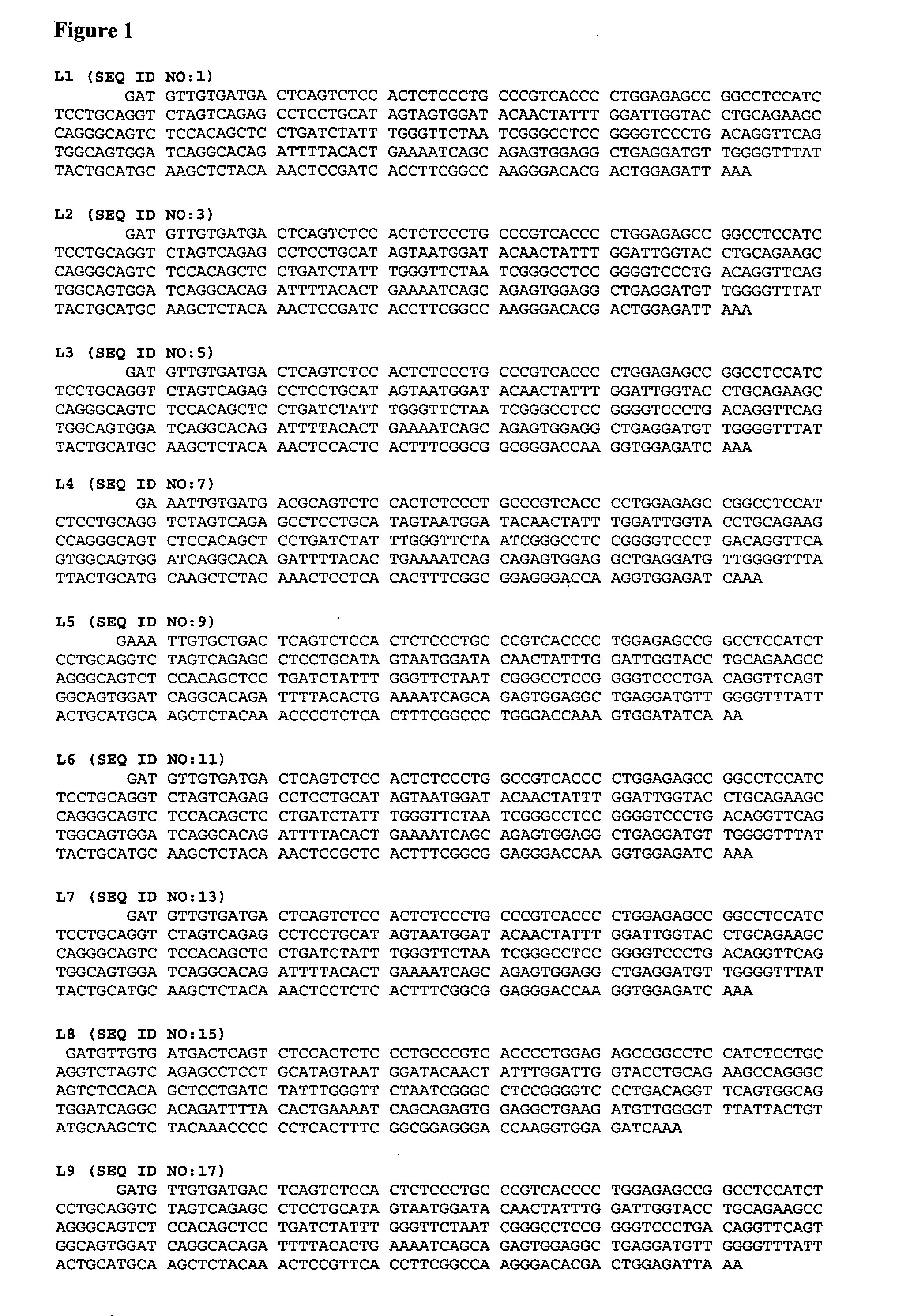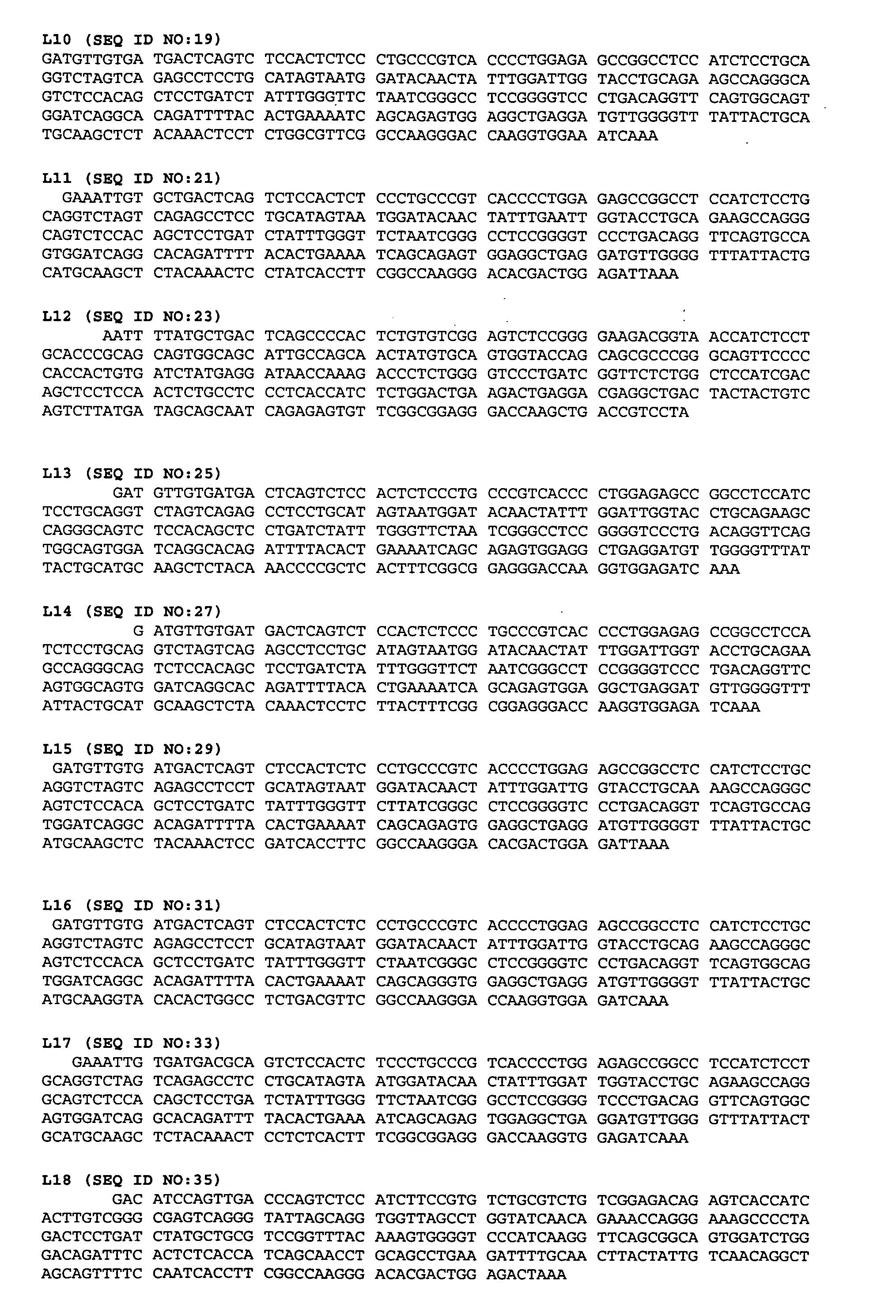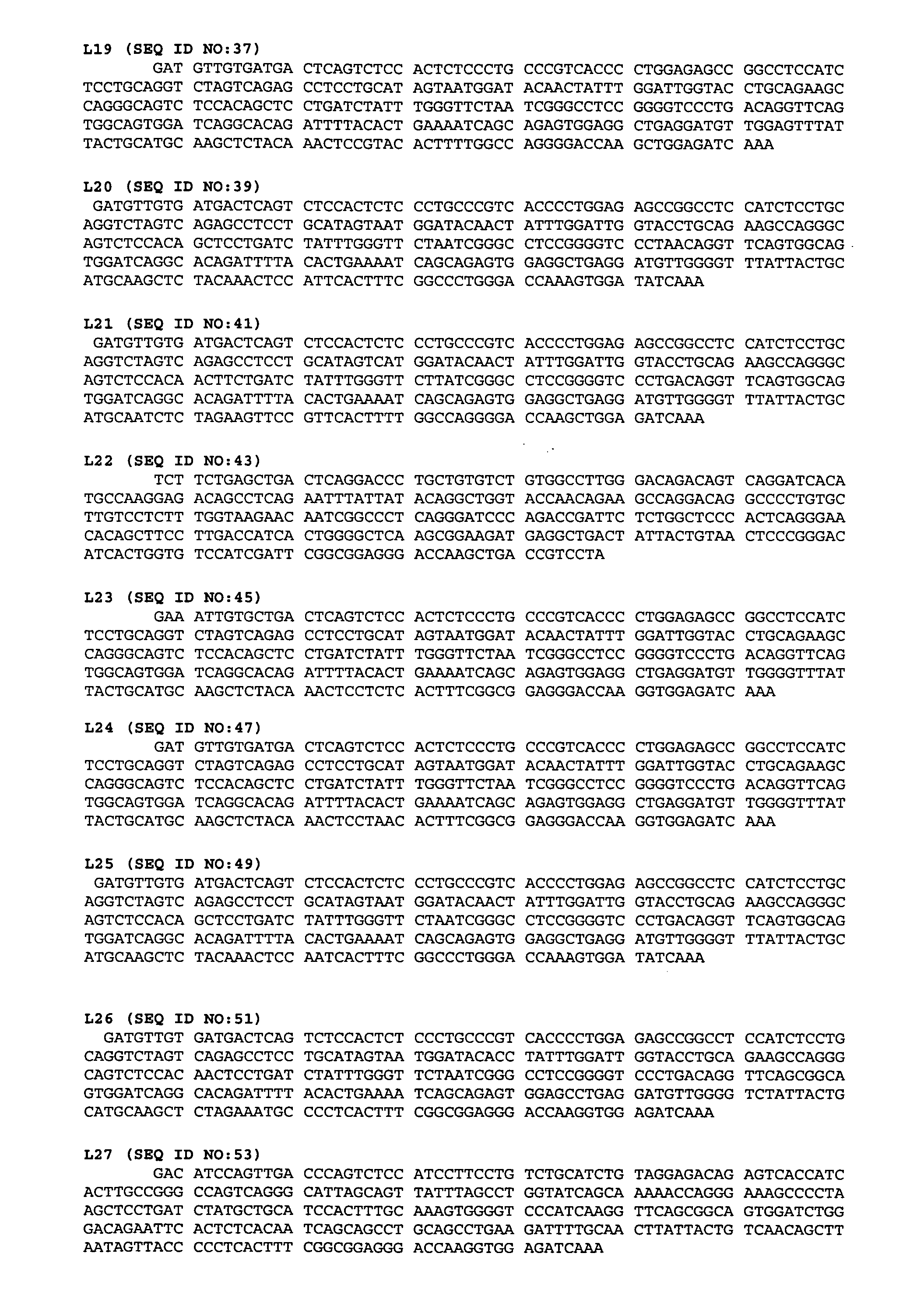Methods and compositions for treating tumor diseases
a tumor and composition technology, applied in the field of tumor diseases, can solve the problems of acute toxicity, secondary malignancies, serious limitations for a young patient population, etc., and achieve the effects of reducing metabolic activity, improving symptom associated, and eliminating metabolic activity
- Summary
- Abstract
- Description
- Claims
- Application Information
AI Technical Summary
Benefits of technology
Problems solved by technology
Method used
Image
Examples
example 1
Preparation of Antibodies
[0204]This example demonstrates a method of preparing antibodies recognizing the IGF-1 receptor.
[0205]IGF-1 receptor polypeptides may be employed as immunogens in generating monoclonal antibodies by conventional techniques. It is recognized that polypeptides in various forms may be employed as immunogens, e.g., full length proteins, fragments thereof, fusion proteins thereof such as Fc fusions, cells expressing the recombinant protein on the cell surface, etc.
[0206]To summarize an example of such a procedure, an IGF-1R immunogen emulsified in complete Freund's adjuvant is injected subcutaneously into Lewis rats, in amounts ranging from 10-100 μl. Three weeks later, the immunized animals are boosted with additional immunogen emulsified in incomplete Freund's adjuvant and boosted every three weeks thereafter. Serum samples are periodically taken by retro-orbital bleeding or tail-tip excision for testing by dot-blot assay, ELISA (enzyme-linked immunosorbent ass...
example 2
Isolation of Human IGF-1R(ECD)-C3-muIgG1
[0209]This example provides a method of making a soluble fragment of IGF-1R useful for raising antibodies.
Cloning of pDSRα:huIGF-1R(ECD)-C3-muIgG1Fc
Primers 2830-36:SEQ ID NO: 256)5′ AGCAAGCTTCCACCATGAAGTCTGGCTCCGGAGGAGG 3′and 2830-38:SEQ ID NO: 257)5′ ATTTGTCGACTTCGTCCAGATGGATGAAGTTTTCAT 3′,
were used to amplify the human IGF-1R extracellular domain (1-906) cDNA sequence. The primers included a Kozak translation initiation sequence (underlined above) preceding the start codon, restriction sites for subsequent subcloning, and a caspace-3 site, which is inserted next to the extracellular domain C-terminus. PCR was performed on a PerkinElmer 2400 (PerkinElmer, Torrance, Calif.) under the following conditions: 1 cycle at 95° C. for 2 min, 23 cycles at 95° C. for 30 sec, 58.5° C. for 30 sec, and 72° C. for 3 min, and 1 cycle at 72° C. for 10 min. Final reaction conditions were 1×pfu TURBO® buffer (Stratagene, La Jolla, Calif.), 200 μM dNTPs, 2 μM ea...
example 3
Initial Screen for Anti-IGF-1R Phage Fab
[0216]This example provides a method of identifying Anti-IGF-1R antibodies.
[0217]A Target Quest Q Fab library (“the TQ library”; Target Quest, Maastricht, the Netherlands), which was constructed using peripheral blood lymphocytes from four healthy donors and splenic lymphocytes from one patient with gastric carcinoma, was obtained. The library diversity was 3.7×1010 clones, containing 3×109 heavy chains. The source, screening methods, and characterization of the library have been published (de Haard et al, 1999, J Biol Chem 274:18218-30). Dynabeads (200 μl) M-450 Uncoated (catalog #140.02, Dynal, Lake Success, N.Y.) were washed 3 times with PBS, resuspended in 200 μl of IGF1R(ECD)-C3-mFc to a concentration of 0.5 μM in PBS, and incubated at 4° C. on a rotator overnight. The IGF-1R(ECD)-C3-mFc coated beads were washed 3× with 1 ml of 2% non-fat dry milk (M) in PBS (2% MPBS), and then blocked with 1 ml of 2% MPBS at room temperature for 1 hour. ...
PUM
| Property | Measurement | Unit |
|---|---|---|
| PET | aaaaa | aaaaa |
| composition | aaaaa | aaaaa |
Abstract
Description
Claims
Application Information
 Login to View More
Login to View More - R&D
- Intellectual Property
- Life Sciences
- Materials
- Tech Scout
- Unparalleled Data Quality
- Higher Quality Content
- 60% Fewer Hallucinations
Browse by: Latest US Patents, China's latest patents, Technical Efficacy Thesaurus, Application Domain, Technology Topic, Popular Technical Reports.
© 2025 PatSnap. All rights reserved.Legal|Privacy policy|Modern Slavery Act Transparency Statement|Sitemap|About US| Contact US: help@patsnap.com



